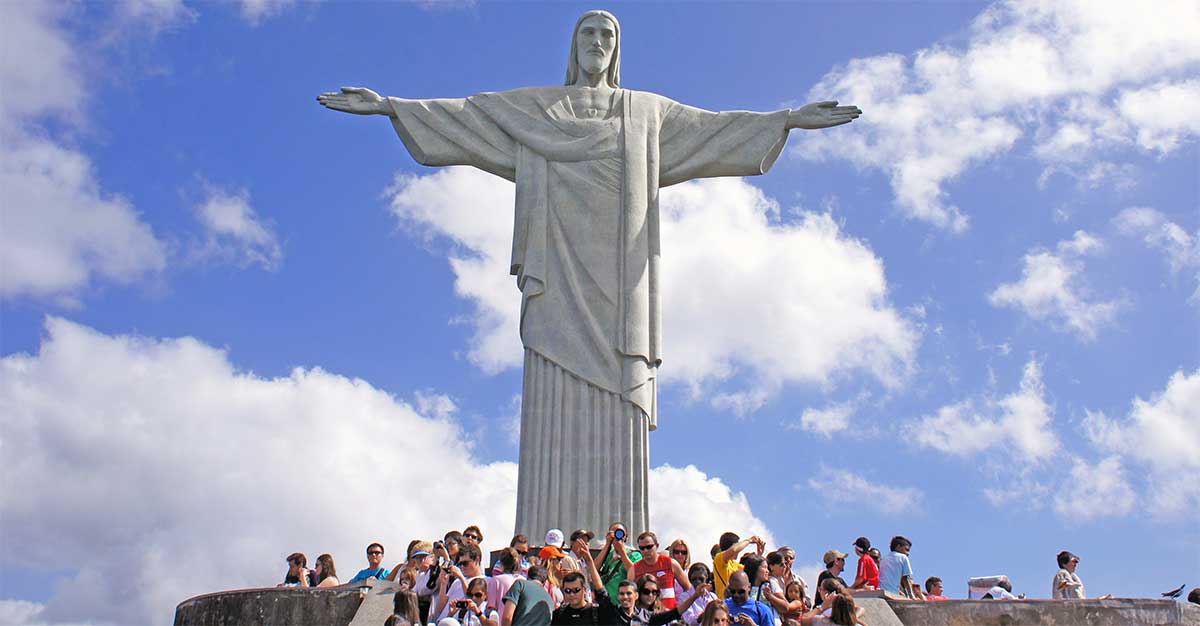Like so many people, I have always been fascinated by pictures of the Christ the Redeemer statue in Rio de Janeiro, Brazil and have wanted to visit Rio de Janeiro and Brazil for a long time.
Rio de Janeiro, Brazil.
Rio de Janeiro is the capital of the state of the same name (Brazil's third most populous state), and the second most populated city in Brazil after São Paulo. Part of the city has been designated as a World Heritage Site.
Founded in 1565 by the Portuguese, the city was initially the seat of the Captaincy of Rio de Janeiro, a domain of the Portuguese Empire. In 1763, it became the capital of the State of Brazil, a state of the Portuguese Empire. In 1808, when the Portuguese Royal Court moved to Brazil, Rio de Janeiro became the seat of the court of Queen Maria I of Portugal. Under the leadership of her son, Prince Regent John VI of Portugal, she subsequently raised Brazil to the dignity of a Kingdom within the United Kingdom of Portugal, Brazil, and Algarves. Rio remained the capital of the Lusitanian monarchy until 1822 when the Brazilian War of Independence began. Rio de Janeiro subsequently served as the capital of the independent monarchy, the Empire of Brazil, until 1889, and then the capital of a Republican Brazil until 1960, when the capital was transferred to Brasília.
Rio de Janeiro is one of the most visited cities in the Southern Hemisphere and is known for its natural settings, carnival, samba, bossa nova, and balneario beaches such as Barra da Tijuca, Copacabana, Ipanema, and Leblon. In addition to the beaches, some of the most famous landmarks include the giant statue of Christ the Redeemer atop Corcovado Mountain, Sugarloaf Mountain with its cable car, the Sambódromo, a permanent grandstand lined parade avenue, which is used during Carnivals and Maracanã Stadium, one of the world's largest football stadiums.
Christ the Redeemer statue.
Christ The Redeemer is an Art Deco statue of Jesus Christ in Rio de Janeiro, Brazil, created by French sculptor Paul Landowski and built by Brazilian engineer Heitor da Silva Costa in collaboration with the French engineer Albert Caquot and Romanian sculptor Gheorghe Leonida who sculpted the face. Constructed between 1922 and 1931, the statue is 30 metres high, excluding its 8-metre pedestal. The arms stretch 28 metres wide. It is made of reinforced concrete and soapstone. Christ The Redeemer differs considerably from its original design, as the initial plan was a large Christ with a globe in one hand and a cross in the other. Although the project organisers initially accepted the design, it later changed to today's statue, with the arms spread out wide.
The statue weighs 635 metric tons and is located at the peak of the 700-metre Corcovado Mountain in the Tijuca National Park overlooking the city of Rio de Janeiro. A symbol of Christianity worldwide, the statue has also become a cultural icon of Rio de Janeiro and Brazil and was voted one of the New Seven Wonders of the World.
My trip to Rio.
In November 2023, I took a cruise from Barcelona to Rio de Janeiro in Brazil. I visited Cadiz in Spain and Tenerife, Recife, Salvador and Ilheus in Brazil on the way before arriving in Rio de Janeiro. I then spent 5 days at a hotel on Copacabana beach before flying home.
While in Rio de Janeiro, I was lucky to visit the Christ the Redeemer statue and Sugarloaf Mountain. I also went to see many other places in Rio de Janeiro whilst I stayed at Copacabana beach where I went swimming and spent some time on the famous beach.
